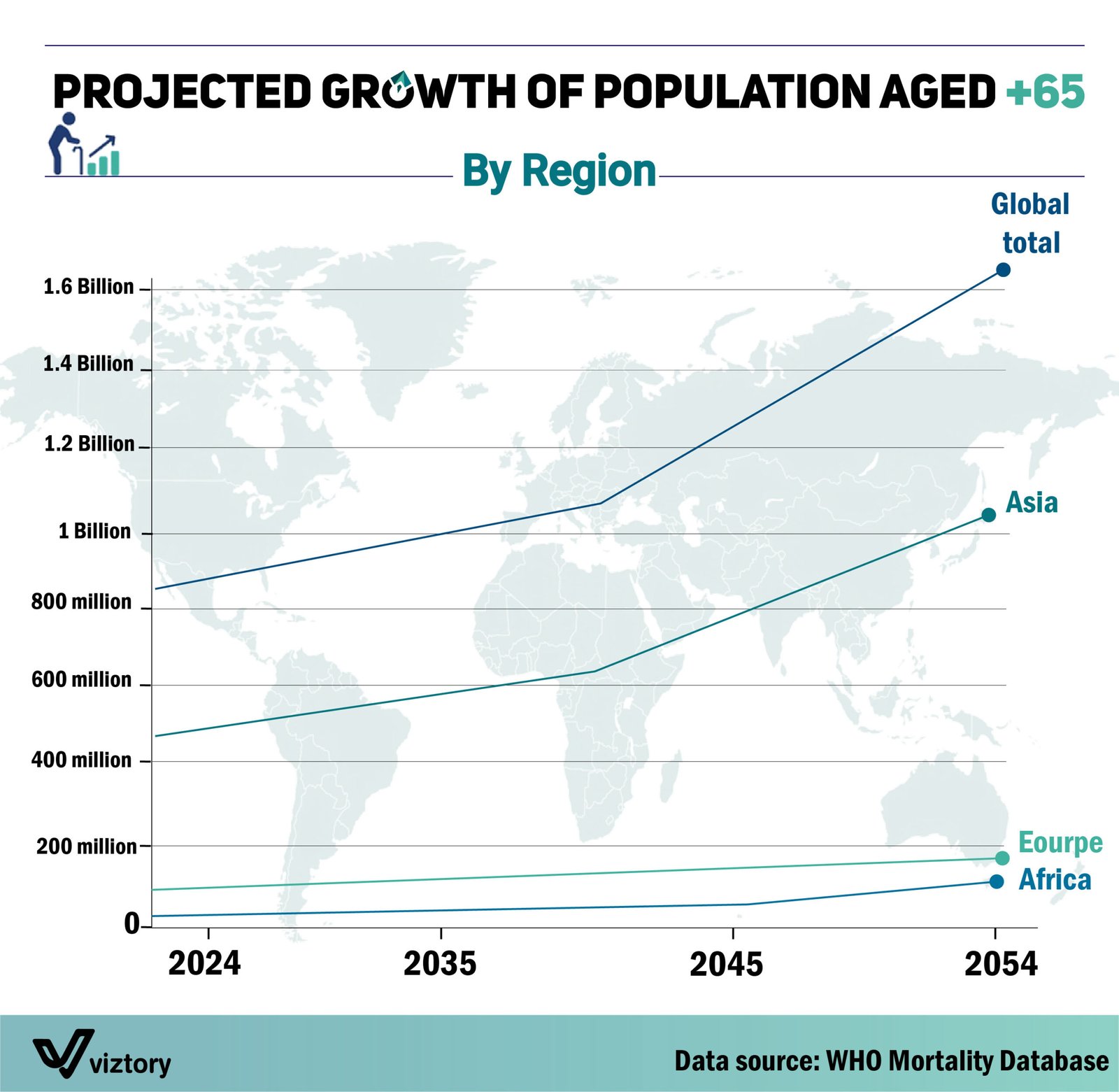Projected Growth of Population Aged +65 By Region
-
Jan, Thu, 2025
Introduction
The aging population is becoming a defining global challenge, with profound implications for public health systems, economic structures, and societal well-being. The Projected Growth of Population Aged +65 by Region highlights the rapid increase in the number of elderly individuals worldwide, particularly in Asia, Europe, and Africa. This trend emphasizes the urgent need for health-related strategies to address the demands of an aging population.
Key Trends in Population Growth
The global population aged 65 and older is expected to grow exponentially, reaching approximately 1.6 billion by 2054. This growth reflects advancements in healthcare, reduced mortality rates, and increased life expectancy, but it also poses significant challenges for health systems globally.
Asia
- Asia will see the largest growth in the elderly population, surpassing 1 billion by 2054.
- This rapid increase is driven by populous nations such as China and India, where improved healthcare has extended lifespans.
- The rise of age-related health issues such as cardiovascular diseases, diabetes, and dementia will require region-specific healthcare reforms.
Europe
- Europe will experience steady growth in its elderly population, despite its smaller overall population size.
- With one of the highest life expectancies globally, Europe faces challenges in maintaining sustainable healthcare systems.
- Issues such as aging healthcare workforces and increased dependency ratios highlight the need for innovative solutions like telemedicine and AI-driven eldercare.
Africa
- Africa’s elderly population will grow at a slower pace compared to Asia and Europe, but its younger population today means it will face similar challenges in future decades.
- The continent must focus on building healthcare infrastructure now to accommodate future demands.
Impact on Global Health
The surge in the elderly population will significantly impact public health systems worldwide.
- Chronic Diseases: As people age, they become more susceptible to chronic diseases, which account for the majority of healthcare spending in elderly populations.
- Healthcare Resources: Increased demand for long-term care facilities, trained geriatric specialists, and medical supplies will strain current health systems.
- Mental Health: Conditions such as dementia and depression are expected to rise among the aging population, necessitating greater mental health resources and support systems.
Strategies for Addressing Aging Populations
Governments and healthcare systems must adopt proactive strategies to mitigate the challenges of an aging population:
- Preventative Healthcare: Promoting healthy lifestyles and preventive measures to reduce the onset of chronic diseases.
- Technology Integration: Using technology such as wearable devices, telemedicine, and AI to monitor and manage health more efficiently.
- Policy Reforms: Investing in long-term care systems and supporting caregivers through subsidies and training programs.
- Global Collaboration: Sharing resources, expertise, and strategies across nations to address this universal challenge.
Conclusion
The projected growth of the population aged 65 and older underscores the need for a global response to an aging world. As Asia, Europe, and Africa prepare for significant increases in their elderly populations, health systems must adapt to meet the challenges ahead. By focusing on prevention, technology, and innovative policies, societies can ensure that aging populations live healthier, more fulfilling lives while maintaining sustainable healthcare systems.

